Structure and Aerodynamics of SAAB 340 Series Aircraft
Â
The following report will contain information on the SAAB 340 series aircraft in regards to its structure, aerodynamics, propulsion, operation and safety throughout its history    (1970’s-2017)
Â
Introduction
The SAAB 340 is a regional aircraft series designed by the Swedish aerospace manufactures with the desire to explore commercial airliners with 30-40 passengers in the 1970’s, originally named the SAAB 340A. The plane was selected to run with GE turboprop engines due to their inherent fuel economy compared to a turbofan or turbojet engines. The SAAB 340B was the first development of the SAAB 340A, the newer aircraft had more powerful engines, a larger tail plane and the crafts range and take-off weight where increased. The SAAB 340’s ceased production in 1998 with lack of interest from airliners and hence profits reduced. The SAAB 340 has many renditions the most common being the 340A, 340B, 340B plus including carbo, corporate and commercial interior designs.
Of note is that originally SAAB AB and Fairchild (an American company) co designed the 340, having the original name of the SF340, Fairchild designed wings, wing mount nacelles and empennage.
The SAAB 340 can be defined as a monoplane with a tractor engine setup. It has a tricycle wheel layout and a conventional tail. The wings are dihedral, low mount, tapered and cantilevered from the fuselage with a single spar. Some of these are further investigated below.
It would also be of note to mention the SAAB 340B (most common variant of SAAB 340’s) has seating typically for 34 passengers where their weight with baggage is 214lbs, a fact sheet with the aircraft data and statistics will be attached in the appendix.
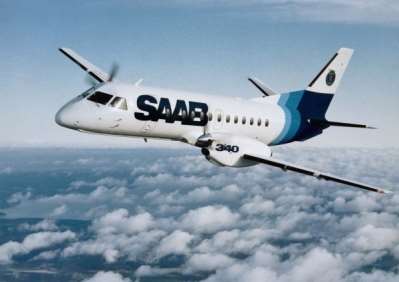

Structure and Construction
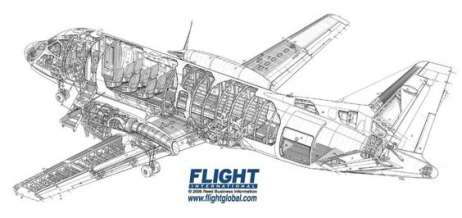

The SAAB 340 uses common and unusual structural components during its 40+ year service, some of the features which has characterised the aircraft is its single spar wing design, cable strengthen tail plane and a metal bonded skin. These structural components used by SAAB AB to maintain the range of their aircraft whilst also increasing range and payload.
The SAAB 340 uses a single spar wing which inserted behind the leading edge which allows for the complexity of the wing to be reduced compared to a multi spar wing. This is beneficial in the construction of a regional aircraft due to the reduced in cost in regards to the difficulty in which it is to design and then build a multi spar wing. The single spar also allows for more free space in the wing interrupted only by the ribs which are designed to have holes in them to reduce weight and allow for usable space (fuel and control surface actuators) in the aircraft, see figure 3 in the appendix. The single spar in the tapered wing also allows for a slender trailing edge of the aerofoil which can be further explored in the aerodynamical section of this report.
The SAAB 340 uses a unique feature for a commercial airliner to use, a cable was installed from the top of the empennage to another, the unique design will be further explored below however the cable installed on the 340A is a unique structural component using the cables tension to give the wing added structural rigidity. The newer 340B and B plus don’t have the cable installed, which may be due to lighter and stronger longerons or ribs or better engineered surfaces like metal bonding which is used to cover over 40% of the aircrafts external surfaces.
The use of metal bonding in its surface skin reduces weight and increases the structural integrity of the aircraft. This increased rigidity in the surface allows for the aircraft to be designed with less internal bracing and material weight. By incorporating the structural benefits of an aluminium bonded skin into the aeroplane, SAAB AB and the Engineers can best maximise the range, interior space and payload.
The SAAB 340 is made up of common modern aircraft parts and features, the fuselage and wings are made from aluminium ribs, spars, longerons and stringers which although not unique take advantage of the lightness of aluminium and its structural strength compared to a point 3% carbon steel or an expensive composite equivalent. The SAAB AB engineers therefore had to make the most of cheaper but most effective materials to keep costs lows for consumers of the regional aircraft but still have a light and fuel efficient aeroplane to make regional distance with 30-40 passengers as per the original design specifications.
The structural aspects of the aircraft are important in making the SAAB 340 maximise its space and payload, the engineers therefore had to combine techniques like tension in cables and intelligently designed wings which will minimise weight but still comply with complex fluid flow around the fuselage and aerofoils as well as can be keep passengers safe and comfortable.
Aerodynamics
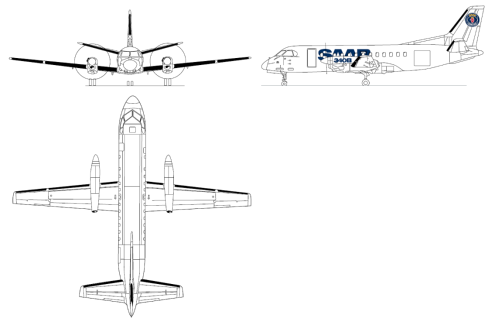

The SAAB 340, like all modern aircraft, is designed to minimise drag whilst maximising lift. The SAAB AB aircraft uses intelligent and mandatory aerodynamics and aerodynamical systems on their aircraft; a unique tail plane, parabolic nose and fuselage shape and the wings shaping plus engine integration.
The SAAB 340 has a conventional empennage, where the vertical stabilizer has two parts, highlighted in figure 4 of the appendix. SAAB AB has incorporated this design in the 340 and their 2000 series aircraft. The two stages in the vertical stabiliser helps to create a more stable and streamlined laminar flow structure around the stabiliser and hence allows for the rudder to be more effective in controlling the airflow around it.
The SAAB 340 has a typical airliner style parabolic nose cone which leads into a straight circular fuselage (minus the ‘V’ shape wing mount nacelles on the bottom of the aircraft, shown on figure 6). The parabolic nose cone is highly efficient in having the air flow move around the aircraft without inducing large quantities if air resistance and drag. Further SAAB AB have slimmed the rear of the plane into a point, typical of modern airliners in an effort to have the air flow coming off the aircraft in a low drag streamlined structure.
The SAAB 340 uses a tapered, cantilevered, dihedral wing (as mentioned above) and has an equally cantilevered dihedral horizontal stabiliser both of which have aerodynamic features of no winglets, small cross sectional height as well as the wings having been integrated with the engine. The lack there of winglets on the SAAB 340 highlights how the engineers have been able to reduce the mixing of air from the top and bottom of the aerofoil. The usual effect of winglets will create a barrier, not allowing for the high and low speed air flow to create drag and vortexes. SAAB AB have been able to sculpt their aerofoils so that the need for a winglet has been reduced, a technique used by Boeing, on the 747 for example.
The SAAB 340 has also integrated their GE turboprop engines into the wing design. This is seen in figure 6 of the document particularly in the front view, where the engine has been “slotted” into the wing and has allowed for the turboprop to be elegantly and aerodynamically efficiently positioned to reduce the drag which can occur from having an engine hang off the wing.
This fitted setup also gives the operational functionality of the aircraft as the retractable undercarriage is also integrated into the engine area. This innovative solution for SAAB AB engineers has allowed for the aircraft to have a retractable undercarriage but keep stability on a runway, giving the SAAB 340 aerodynamically efficient flight and hence fuel efficient flight too.
The SAAB 340B+ differs from the 340B due to its extended wingtips which allows for it to be more aerodynamically efficient in more humid environments and to be able to take off on shorter runways, this variation in wing design of the different models gives the aircraft additional enhancements is rural and regional areas where the flying environment isn’t ideal.
Propulsion
The SAAB 340 uses GE turboprop engines with a 4-propeller prop from Dowty Rotol or Hamilton Sundstrand, differences in noise given in figure 5 of the appendix. The SAAB 340B uses the GE CT7-9B, pictured in figure 6 of the appendix, which has an 1870 shp rating [5].
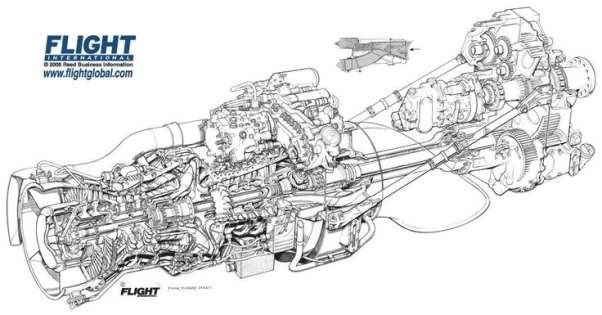
Figure 8 a cutaway of the CT7-9B turboprop [6]
The turboprop engine used by the 340 is highly efficient engine with high range for its size. The engine can fly a maximum 470nm with a maximum total weight in excess of 29000lb (take off) on under 6000lb of fuel. The two engines can thrust the SAAB 340B and B Plus at 283 knots at an altitude of 25000 feet. Further information on range and payload is in figure 9 of the appendix.
The SAAB 340 has used different engines over the years, originally running CT7-5A2 turboprops the change to a CT7-9B led to an increase in the SHP of the engines, more power, and an increase in fuel efficiency.
More so, it is of current note that the SAAB 340B has had recent engine and propeller failures with REX region airlines in Australia. The failure of a Turboprop engine on the 23rd of march 2017 and a propeller falling off mid-flight on the 17th of march 2017. However due to intelligent engineering on behalf of SAAB AB the two planes could fly on one of the turboprops and make a safe emergency landing. Thus, highlighting both the aerodynamic design quality of the aircraft and how the GE CT7-9B engine can still power the aircraft with only half available thrust.
Operation Requirements
The SAAB 340 requires a runway, crew and a form of refuelling at destination/departure. Due to the SAAB 340’s design the aircraft has been deliberately constructed with regional and rural travel in mind where infrastructure is low and basic hence the 340 has built in facilities such as stairs and extra additions for the craft to cope and work in weather of the extremes and on runways made of gravel and dirt.
The SAAB 340B has extras such as the gravel pack and longer wingtips which allow for it to operate in humidity and heat without larger runways or advanced asphalt airports [8].
The SAAB 340B requires, at SL with optimal flaps and at ISA, a runway of 4220ft (1.3km) however at less optimum environments the runway needed can be 6690ft (2.02km).
The SAAB 340 does require 2 pilots and one flight attendant can be also apart of the crew. Die to the small seating numbers the SAAB 340 doesn’t have room for more than one attendant. The floor plan is shown below highlighting where the crew is stationed on a typical 340 layout.
 Figure 10 SAAB 340 layout as intended by SAAB AB [4]
Figure 10 SAAB 340 layout as intended by SAAB AB [4]
Safety Record
The SAAB 340 has a rather good incident record with only four flights ending in fatalities, however this is considered four times to many. The below table makes note of the four fatal incidents of the SAAB 340 [9]
|
Fatal Incidents |
|||
|
Year |
Airline and Flight |
Fatalities |
Reason |
|
1994 |
KLM city hopper 433 |
3 |
The Engine Stalled and the Aircraft struck the ground, the Aircraft broke upon impact |
|
1998 |
Formosa Airlines |
13 |
The Aircraft has electrical faults and the Crew was disorientated, the plane crashed in the ocean |
|
2000 |
Crossair 498 |
10 |
The Aircraft banked to steep causing a spiral dive and resulted in the aircraft crashing |
|
2011 |
SOL LÃneas Aéreas 5428 |
22 |
The Aircraft whilst flying at FL179 began to pick up ice accretion and by the time the plane descended to FL140 the ice was to server causing the crash |
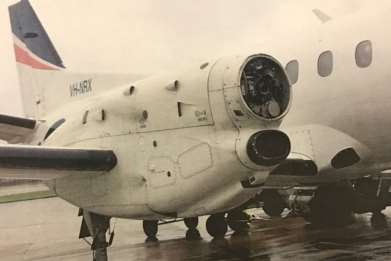

The SAAB 340 has had successfully operated for many years with only few fatal accidents which is a testament to the engineering behind the aeroplane however aircraft isn’t without incident. Most recently Australian regional aircraft carriers Rex regional airlines has had two engine issues. Firstly, on the 17th of march 2017 the propeller fell off the turboprop engine, followed by the 23rd where the engine on the starboard side came up with warnings causing it to land.
These two recent examples showcase how even in extreme circumstances where 50% of the planes engines have been rendered useless the pilots can fly the regional airliner safely to an airport to land. Some other notable instances of the SAAB 340B having mid-air issues include a recent Western Air plane crash at Grand Bahama International Airport where following take off the plane experienced issues with its undercarriage and was forced into an emergency landing where the undercarriage then gave way, the intelligent design of fuselage floor and turboprop-wing integration allowed for the plane to stop without causing any major injuries to the passengers [11].
Conclusion
The SAAB 340 series was designed in the 1970’s as a cost effective and effect aircraft for SAAB AB to explore commercial aviation, this venture led to one of the most successful regional airliners with more units being sold than any other during its 40-year service history. The structural, aerodynamic and propulsion features although common place in aviation demonstrate the design of the 340 as a simple and effective flyer.
The 340 series has basic crew and infer structure requirements however this has allowed for it to fly from city to city and onto the county without changing the undercarriage. Coupled with it relative susses in terms of safety the SAAB 340 is a proven reliable aircraft.


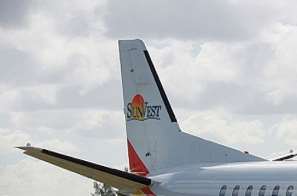 Appendix
Appendix
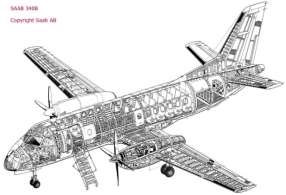
 Figure 3 of SAAB 340B, note the ribs and spar in the wing [3]
Figure 3 of SAAB 340B, note the ribs and spar in the wing [3]
|
Certified Noise Levels |
||
|
Dowty Rotol |
Hamilton Sundstrand |
|
|
Fly-Over |
78.4 |
78.2 |
|
Side-line |
85.9 |
86.2 |
|
Approach |
91.8 |
90.1 |
Figure 5 giving the noise differences between the two propeller companies [4]
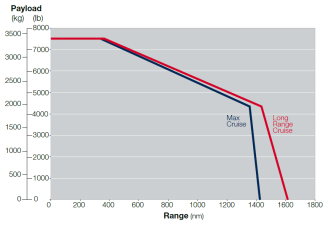

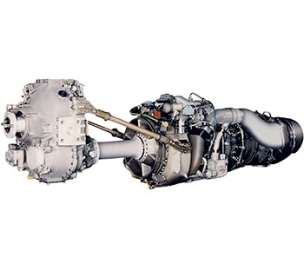

|
Weights |
lb’s |
Flight |
||||
|
Max Take Off |
29000 |
Max Cruise Speed |
283 kt |
|||
|
Max Landing |
                28500 |
Max Operating Altitude |
25000 ft |
|||
|
Max Zero Fuel |
26500 |
|||||
|
Operational Empty |
19000 |
|||||
|
Max Payload |
7500 |
|||||
|
Max Fuel |
5690 |
|||||
|
Airfield Performance |
||||||
|
Sea Level |
ISA |
ISA+10°C |
ISA+20°C |
|||
|
Take Off Weight (lb) |
29000 |
29000 |
29000 |
|||
|
Take Off Distance (ft) |
4220 |
4460 |
4680 |
|||
|
5000 ft above MSL |
ISA |
ISA+10°C |
ISA+20°C |
|||
|
Take Off Weight (lb) |
29000 |
29000 |
28180 |
|||
|
Take Off Distance (ft) |
5245 |
6215 |
6690 |
|||
|
Sector Performance |
||||||
|
Sea Level |
100nm |
200nm |
300nm |
400nm |
500nm |
|
|
Take of Weight (lb) |
27995 |
38400 |
28750 |
29000 |
29000 |
|
|
Block Fuel (lb) |
610 |
1000 |
1330 |
1630 |
1920 |
|
|
Block Time (min) |
34 |
56 |
79 |
103 |
129 |
|
|
Passengers with Baggage |
34 |
34 |
34 |
34 |
33 |
|
|
5000 ft above MSL |
100nm |
200nm |
300nm |
400nm |
500nm |
|
|
Take of Weight (lb) |
27920 |
28180 |
28180 |
28180 |
28180 |
|
|
Block Fuel (lb) |
595 |
975 |
1295 |
1580 |
1865 |
|
|
Block Time (min) |
33 |
55 |
77 |
101 |
126 |
|
|
Passengers with Baggage |
34 |
34 |
32 |
31 |
30 |
|
|
Specifications |
Payload Range |
Long Range Cruise |
Long Range Cruise |
|||
|
Length |
64 ft 9 in |
34 Passengers |
445nm |
470nm |
||
|
Height |
22 ft 11 in |
Maximum Payload |
370nm |
400nm |
||
|
Wing Span |
70 ft 4 in |
|||||
|
Propeller ground clearence |
1 ft 8 in |
Engine |
||||
|
Cargo Door (HxW) |
51 in x 53 in |
SHP at Sea Level |
1870 |
|||
|
Sill Height, Passenger Door |
5ft 4 in |
|||||
|
Sill Height, Cargo Door |
5 ft 6 in |
|||||
Below is the SAAB 340B Fact sheet, Figure 11 [4]
References
[1] , first accessed on 25/03/2017
[2] , first accessed on 25/03/2017
[3] , first accessed on 25/03/2017
[4] SAAB 340B/340B Plus document from SAAB AB
[5] , first accessed on 25/03/2017
[6] , first accessed on 25/03/2017
[7] , first accessed on 25/03/2017
[8] , first accessed on 25/03/2017
[9] , first accessed on 26/03/2017
[10] , first accessed on 26/03/2017
[11] , first accessed on 26/03/2017
Other sources of information used but not specifically referenced
[12] ‘Aerodynamic and Flight Dynamic Simulations of Aileron Characteristics’, by Erkki Soinne Department of Aeronautics Royal Institute of Technology SE-100 44 Stockholm, Sweden
[13] , first accessed on 25/03/2017
[14] , first accessed on 25/03/2017
[15] , first accessed on 25/03/2017
[16] , first accessed on 25/03/2017
[17] , first accessed on 25/03/2017
[18] , first accessed on 25/03/2017
[19] , first accessed on 25/03/2017
[20] ‘SAAB Regional Aircraft, Supporting Your Future’ brochure from SAAB AB website
PART TWO: aircraft data and graphs
|
Manufacturer |
Aircraft |
MTOW |
max range |
no. pass |
ref no. |
|
Airbus |
A300-600 |
375900 |
4050 |
266 |
1 |
|
A310 |
361600 |
4350 |
220 |
2 |
|
|
A318 |
149900 |
3100 |
107 |
3 |
|
|
A319NEO |
166400 |
4200 |
124 |
4 |
|
|
A320 |
172000 |
3300 |
150 |
5 |
|
|
A321 |
206100 |
3200 |
185 |
6 |
|
|
A330-200 |
529100 |
7250 |
247 |
7 |
|
|
A330-300 |
529100 |
6350 |
277 |
8 |
|
|
A330-800NEO |
533500 |
7500 |
257 |
9 |
|
|
A330-900NEO |
533510 |
6550 |
287 |
10 |
|
|
A340-200 |
606300 |
6700 |
261 |
11 |
|
|
A340-300 |
609600 |
7300 |
277 |
12 |
|
|
A340-500 |
837800 |
9000 |
293 |
13 |
|
|
A340-600 |
837800 |
7800 |
326 |
14 |
|
|
A350-800 |
546700 |
8200 |
280 |
15 |
|
|
A350-900 |
617300 |
8100 |
325 |
16 |
|
|
A350-1000 |
681000 |
7950 |
366 |
17 |
|
|
A380 |
1272000 |
8200 |
544 |
18 |
|
|
Boeing |
707-120 |
248000 |
2607 |
181 |
19 |
|
717-200 |
110000 |
1440 |
106 |
20 |
|
|
727-100 |
170000 |
2703 |
131 |
21 |
|
|
737-700 |
154500 |
4400 |
149 |
22 |
|
|
737-800 |
172500 |
4000 |
189 |
23 |
|
|
737-900 |
187679 |
3200 |
215 |
24 |
|
|
747-8 |
987000 |
8000 |
410 |
25 |
|
|
757-200 |
255000 |
3910 |
228 |
26 |
|
|
777-8 |
242630 |
8700 |
375 |
27 |
|
|
777-9 |
759000 |
7600 |
425 |
28 |
|
|
777-200LR |
766000 |
8555 |
317 |
29 |
|
|
777-200ER |
656000 |
7065 |
313 |
30 |
|
|
777-300ER |
775000 |
7370 |
396 |
31 |
|
|
787-8 |
484002 |
7355 |
242 |
32 |
|
|
787-9 |
557000 |
7635 |
290 |
33 |
|
|
787-10 |
557000 |
6430 |
330 |
34 |
(Graphs on page 14)


From the above data, we can calculate the pound/nautical miles for each aircraft, by doing this we can then multiply the results by 11 000nm to give the MTOW for that aircraft to fly that distance. By averaging the results, we can get a weight of 856728.7lbs. working is shown below in aircraft order as the table on page 14 (A300-600 to 787-10).
|
weight/range |
x11000 |
|
92.81481481 |
1020963 |
|
83.12643678 |
914390.8 |
|
48.35483871 |
531903.2 |
|
39.61904762 |
435809.5 |
|
52.12121212 |
573333.3 |
|
64.40625 |
708468.8 |
|
72.97931034 |
802772.4 |
|
83.32283465 |
916551.2 |
|
71.13333333 |
782466.7 |
|
81.4519084 |
895971 |
|
90.49253731 |
995417.9 |
|
83.50684932 |
918575.3 |
|
93.08888889 |
1023978 |
|
107.4102564 |
1181513 |
|
66.67073171 |
733378 |
|
76.20987654 |
838308.6 |
|
85.66037736 |
942264.2 |
|
155.1219512 |
1706341 |
|
95.12850019 |
1046414 |
|
76.38888889 |
840277.8 |
|
62.89308176 |
691823.9 |
|
35.11363636 |
386250 |
|
43.125 |
474375 |
|
58.6496875 |
645146.6 |
|
123.375 |
1357125 |
|
65.2173913 |
717391.3 |
|
27.88850575 |
306773.6 |
|
99.86842105 |
1098553 |
|
89.53828171 |
984921.1 |
|
92.85208776 |
1021373 |
|
105.156038 |
1156716 |
|
65.80584636 |
723864.3 |
|
72.9535036 |
802488.5 |
|
86.6251944 |
952877.1 |
|
average= |
856728.7 |
References:
[1] , first accessed on 26/03/2017
[2] , first accessed on 26/03/2017
[3] , first accessed on 26/03/2017
[4] , first accessed on 26/03/2017
[5] , first accessed on 26/03/2017
[6] , first accessed on 26/03/2017
[7] , first accessed on 26/03/2017
[8] , first accessed on 26/03/2017
[9] , first accessed on 26/03/2017
[10] , first accessed on 26/03/2017
[11] , first accessed on 26/03/2017
[12] , first accessed on 26/03/2017
[13] , first accessed on 26/03/2017
[14] , first accessed on 26/03/2017
[15] , first accessed on 26/03/2017
[16] , first accessed on 26/03/2017
[17] , first accessed on 26/03/2017
[18] , first accessed on 26/03/2017
[19] , first accessed on 26/03/2017
[20] , first accessed on 26/03/2017
[21] , first accessed on 26/03/2017
[22] , first accessed on 26/03/2017
[23] , first accessed on 26/03/2017
[24] , first accessed on 26/03/2017
[25] , first accessed on 26/03/2017
[26] , first accessed on 26/03/2017
[27] , first accessed on 26/03/2017
[28] , first accessed on 26/03/2017
[29] , first accessed on 26/03/2017
[30] , first accessed on 26/03/2017
[31] , first accessed on 26/03/2017
[32] , first accessed on 26/03/2017
[33] , first accessed on 26/03/2017
[34] , first accessed on 26/03/2017
[35] , first accessed on 26/03/2017
[36] , first accessed on 26/03/2017
[37] , first accessed on 26/03/2017
[38] , first accessed on 26/03/2017